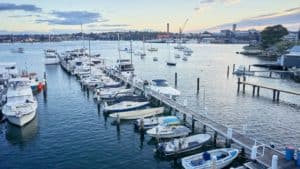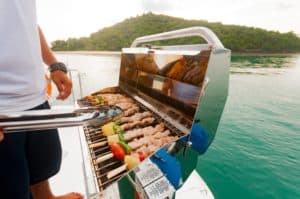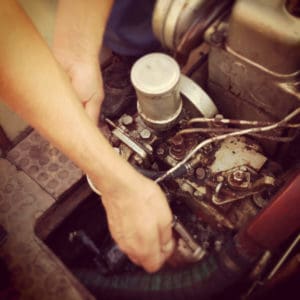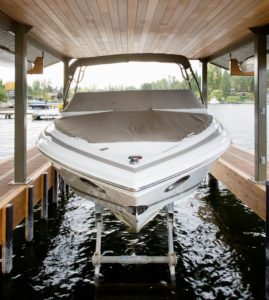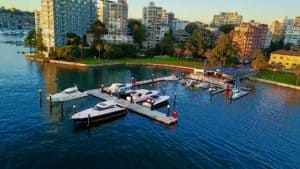Fibreglass, also known as Glass Reinforced Plastic (GRP), is currently the most common material used in recreational boats and watercraft. Fibreglass boats are very durable and can last for fifty years or longer. And while fibreglass gives your hull a glossy, sleek look, you can run into significant issues if it isn’t maintained properly.
Knowing the common issues with fibreglass boats can help you identify a problem before it leads to further damage. This article will discuss the common issues you may encounter with your fibreglass boat and some things you can do to protect your boat before a problem even starts.
Delamination
There is a wood layer between the inner and outer layers of the fibreglass hull. When the wood pulls away from the fibreglass underlayer or starts to break down, water can pool into the bilge of the hull. When this happens and the water sits for an extended amount of time, delamination can occur.
It’s often best to have a professional take a look at the damage to make sure that the boat’s structure has not been affected. Repairing delamination can be very difficult and time-consuming — the fibreglass needs to be removed, and then the inner wood layer needs to be removed and replaced.
Blisters
Blisters start as small, horizontal bumps and cracks on the surface of a fibreglass boat. They can let water in and grow as the water droplets expand and contract.
Collisions and any other actions that can ding the surface can form blisters. Ignoring even the smallest blisters can give them time to crack and tear away the fibreglass surface of your boat. So if you see any blisters, no matter the size, you should get them repaired immediately.
When repairing a blister, the gel top coat and the fibreglass underlayer will need to be removed. Next, a resin is used to fill the blister and finally, a new gel coat is applied.
Fatigue
Many actions can cause stress on your boat and its hull. For example, waves can cause a considerable amount of damage and can significantly reduce the life of your boat. Also, things like engine vibrations, the sun, and constant exposure to water can also impact your boat.
These stressors can wear down your boat’s gel coat resulting in small cracks. These cracks allow water into the layers of fibreglass, which, if not repaired, can cause the fibreglass to warp, blister and peel.
While you can’t avoid fatigue, you can minimise the effects of vibration and wave impact by having your boat maintenanced regularly.
Warping
Exposing your boat to extreme heat for too long can cause the plastic and foam materials that make up the fibreglass substrate to become deformed. When that happens, you will need to replace the fibreglass substrate.
Stringer Damage
The joists under the boat deck running parallel to the axis of the haul are called stringers. They provide support, but they are vulnerable to wear and should receive regular maintenance.
Ways You Can Avoid These Issues With Your Fibreglass Boat
While fibreglass boats require a significant amount less maintenance than other types of boats (especially wooden boats), that doesn’t mean that they are maintenance-free. You still have to keep up with maintenance if you want to extend the life of your boat.
The bottom of your boat is constantly exposed to water, so it’s essential to protect it. Leaving your boat in the water, even for a short amount of time, will allow algae and other organisms to attach themselves to it. Applying a layer of antifouling paint can protect your boat from marine growth and seawater deposits.
You should also pay attention to the area between the waterline and the railing. This area of your boat takes on most of the waves, sun, and seaspray. Failing to care for this part of your boat will cause it to fade, oxidise, and get hazy. You can avoid this by keeping wax on your boat. You can also get a buffer to make the process easier.
Let the Experts at Corleone Marinas Help Keep Your Fibreglass Boat in Excellent Shape
Eventually, fibreglass boats will give in to wear in tear, but with a bit of care and regular maintenance, they can provide you with years of maritime enjoyment. And Corleone Marinas can help make sure you get all the time you can from your boat.
Corleone Marinas has four stunning locations in Elizabeth Bay, Balmain, Drummoyne, and Hawkesbury River at Long Island, all of which are managed by some of the best in the industry. Each location offers a full range of marina services, including wet berths, moorings, and slipways for boats up to sixty feet with shipwrights and mechanics on hand.
Contact us today to learn more.


